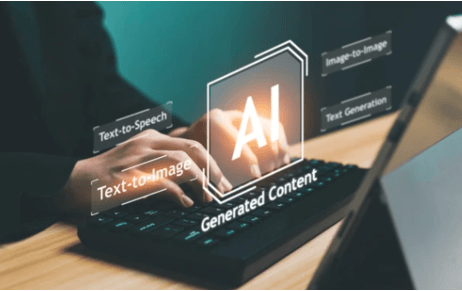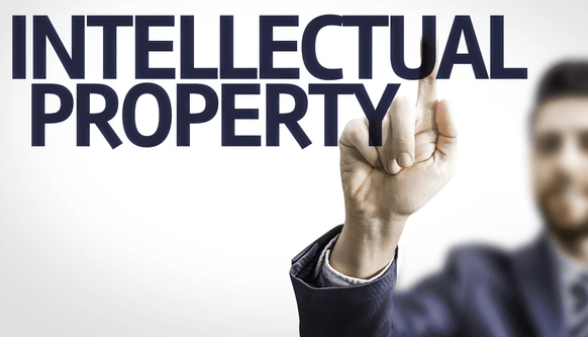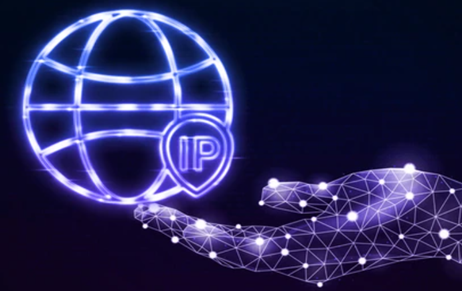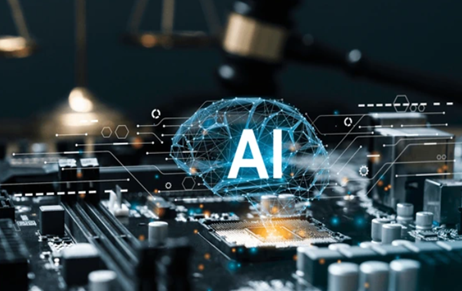The intellectual property (IP) licensing has gone a long way with the pace of technology…
AI Generated Art and its conflict with IPR
This article delves into the ongoing debate around the issue of right of ownership of copyright by AI generators for their novel artwork. This is a major point of contention in the realm IP laws today whether or not AI can be given the said rights and protections under law. This question even after a broad reading of the Indian Copyright law remains unanswered, demanding an amendment in the present law or more clarity on the same by the way of judicial decisions.
This debate is not unique to India and is an emerging issue worldwide, with multiple cases like that of Stability AI and Getty images coming into the picture. The ambit of IPR when it comes to recognizing these AI generators and whether they are also capable of copyright infringement by transforming other creators work has been discussed in detail in the article.
Introduction:
The creative AI and the art generated by such algorithms and technology are raising questions in field of copyright law which have emerged recently. With the development of latest technologies like the Creative Adversarial Network (“CAN”), many areas which were yet unexplored in the realm of Intellectual Property Rights have arisen. CAN is a technology developed by computer scientists and art historians, it is made in a way that it uses input of pieces of original art and works of people which could date back couple centuries to the most recent ones, by using such inputs it then creates a novel piece which could pass off as that of a human artwork.[1]
The questions raised by such technologies are that even though copyright protection for software is a known concept, can the work created by such AI generators pass off as works protected under the copyright law around the world? And then further questions like if given protection under IPR, will that be fair to the initial creators, whose works were used without consent or licensing to create these so-called novel art pieces?
Accusations of copyright infringement have come up in recent times by creators, however the way generators like stable diffusion function, they transform these images to an extent where they appear to be a new creation, such nature and the application of the fair use doctrine appears to be an alternate legal argument for these apps.
Copyright and other protection like Patents are available to some extent for AI technologies, however the question which we will delve into this article is that of whether such protections are extended to the creations of these AI technologies as well, and if yes then to what extent such protections must be awarded.
AI Generated Art: Algorithm or Creativity
DALL-E and Stable Diffusion are some of the most well-known AI apps to generate artwork using algorithms wherein, you just need to put in some prompts in a box and within seconds you will receive a result of your choice. This shift from AI assisting people to do things to using thousands of works which are made to be part of the system and using the same to create something entirely new, it is something beyond assisting and moves into the realm of generating.[2] This shift i.e. from assisting work to generating it has taken the legal regime of IPR by a storm of confusion and questions.
AI is becoming more and more advanced by the day resulting in creation of such art without any sort of skills or human intervention required.[3] Algorithms use existing information and art to learn to create novel looking pieces.[4]
There have been multiple legal questions raised in this realm recently. In a recent case i.e. Anderson v. Stability AI, three artists filed a claim on the basis that their work was used by the AI to train the algorithm and use them in a transformative manner to create new work.[5] However, these artists claimed that their original work was used without any license and was also not sufficiently transformed from their original work which was protected under IP laws.[6] If these claims will be justified then the penalties will be placed for said infringement.[7]
Similar cases were filed in courts around the world and the same will be helpful to define the scope of the fair use doctrine and what can fall under the category of “Derivative work”.
Creator’s will need to keep an eye out to monitor such generators in case work derived from theirs appears. Whether their work can be used by such generators to help the algorithm learn and eventually create work which looks novel is also a questions raised in multiple cases, as these generators are using originally protected works to train their softwares in a way that they can learn and generate art and if this itself qualifies as infringement or not is also an unanswered question.
AI and the Ambit of Intellectual Property Rights
Intellectual Property rights are like a bundle of rights to protect the work done by creators, it can be done by the way of patents, copyrights, etc., these are available so that the creators can benefit from their inventions and creations.[8] These protections were for the purpose protection of human creativity however the way AI has transformed how innovations are done, wherein creations are done without any sort of human interventions, in that case whether IP protection should be given or not becomes an important question.
The framework around AI generated art is extremely vague around the world.
In India, Section 2(d) of the Copyright Act, 1957 defines, “author” as, “concerning any literary, dramatic, musical or artistic work which is computer generated, the person who causes the work to be created”. [9]This definition particularly does not specify whether this person is a natural or a legal person. These works by AI can be considered as computer-generated however the AI cannot be considered as the author regarding copyrightable work.[10] It is held by court that a ‘minimal degree of creativity’ was required for a work to get copyright protection and this creativity should be applied in a way that there is a major variation and not just some very basic one.[11]
When these pre-requisites are analysed in the light of the speed at which AI is developing, there is nothing to say that an AI generator cannot fulfil these conditions, and meet a minimal degree of creativity requirement. However, the additional requirement that the same has to be an author cannot be met by AI till the time the legal personality of the same is unclear. There is a need to shed light on the legal status of AI which can help the courts determine whether they are eligible to ownership rights of copyright for their work or not. Even after this, there will be some issues with respect to liability and the economic benefits arising out of the same which also need to be answered.
The attributability of legal personality to AI is a major issues in this area, as it plays an important role in enforcing rights and placing liability to an entity.[12] The issue of imposition of this liability also comes in the case of where the AI is the creator, as Section 51 of the Copyright Act, 1957 majorly covers imposition of liability in case of infringement only on persons.[13] Since the status of Artificial Intelligence is not yet clear under our law or even in foreign jurisdictions the issue of imposing liability is also under contention.
The Road Ahead:
We have already observed the intricacies involved as to why such art cannot be given copyright under the ambit of copyright law in India and how it is a contentious issues. However, not giving protection could be very disadvantageous to companies that are selling AI generated art and music, this could also result in a decreased funding in such areas.[14] This decreased interest and funding due to lack of legal framework to protect works done by such technologies and algorithms could negatively affect the development of the AI sector.

That being mentioned, IP laws exist to provide benefit to the creators and create liability on them in case of infringement of any right, and such punishments act as a deter for these creators. However, in case where the AI is considered as the creator or the author, any sort of benefit awarded to an AI will not work as an incentive, or a liability under law to pay compensation will not act as a deter to avoid infringement of other’s copyright, considering this the basis of providing IPR fails in the case of extending the same to AI.
The law the way it is currently is not broad-enough to vest copyright or other IP protection to works generated by AI, as there is no legal person in this case to whom the same can be awarded.[15] In case, the laws are amended accordingly and such works can be given appropriate protections in that case other questions like who will get the economic and other attached benefits of the same, the creators of the algorithm or of the art used by AI to learn its programming? The point of human authorship is still an important element of our copyright law and we are not yet ready to give up the same.[16]
In my opinion, our law is not yet at a stage where we are equipped to provide such protection to AI generated artwork as, the element of human authorship is still a very important element of this law. The replacement of the same with AI where there is no scope of human intervention and creative input can be a threat to Human -made artwork, as distinguishing between the same is very difficult and these algorithms at the end of the day use those human works itself, and even though transformed whether such use can fall under fair use or not is still a very debated topic.
So, the Indian law with respect to copyright needs to be amended and debated when it comes to extending the same rights which human authors have to AI generators. This still stands as an extremely contentious topic.
Conclusion:
There are various amendments in the copyright law of India and even foreign jurisdictions, considering the questions posed due to active involvement of AI in creating different artworks, and even music and literary work for that matter. The shift of AI from assisting artists and professionals to actually generating such works is what is demanding the answers to these questions. The question of whether AI can be awarded ownership of copyright or not is still a debated topic as, whether it falls under the definition or not is still unclear even by a narrow or broad reading there is not clarity on the subject.
The recent cases in the field raised multiple other questions as well. A brief analysis of both situations and implications of what will happen if such artwork are protected under IP laws are covered in the article.
With a detailed analysis of the ambiguous future and the road ahead wherein how the definition of author is not broad enough to cover AI is also discussed and the clarity in the subject matter can be brought by relevant amendments or judicial decisions is what is much needed now.
Author: Siya Chaudhary, in case of any queries please contact/write back to us via email to chhavi@khuranaandkhurana.com or at IIPRD.
References:
- https://www.iiprd.com/pixels-and-patents-decoding-a-i-art-copyright-law/
- What Are the Copyright Rules Around AI Art? (makeuseof.com)
- Andersen v. Stability AI Ltd., 23-cv-00201-WHO (N.D. Cal. Oct. 30, 2023)
- https://hbr.org/2023/04/generative-ai-has-an-intellectual-property-problem
- Soaham Bajpai, Artificial Intelligence and Its Creation: Who Owns Intellectual Property Rights?, 10 GNLU J.L. DEV. & POL. 152 (2020).
- Neeraja Seshadri, The Dilemma of Artificial Intelligence Generated Works and Indian Copyright Law, 3 INDIAN J.L. & LEGAL RSCH. 1 (2021).
- Eastern Book Co. V. D.B. Modak, (2008) 1 SCC 1.
- Viyona Mohan, Legal Issues Concerning Artificial Intelligence, Student’s Journal of Education and Development, Issue 07.
- Bridy, A., 2012. Coding creativity: copyright and the artificially intelligent author. Stan. Tech. L. Rev., p.5.
- Avishek Chakraborty, Authorship of AI Generated Works under the Copyright Act, 1957: An Analytical Study, 8 NIRMA U. L.J. 37 (2019).
- Ahmed Elgammal, Bingchen Liu, Mohamed Elhogeiny & Marian Mazzone, CAN: Creative Adversarial Networks Generating “Art” by Learning About Styles and Deviating from Style Norms 3 (Jun. 23, 2017), https://arxiv.org/pdf/1706.07068.pdf%20[https://perma.cc/6NXS-EN9V].
[1] Ahmed Elgammal, Bingchen Liu, Mohamed Elhogeiny & Marian Mazzone, CAN: Creative Adversarial Networks Generating “Art” by Learning About Styles and Deviating from Style Norms 3 (Jun. 23, 2017), https://arxiv.org/pdf/1706.07068.pdf%20[https://perma.cc/6NXS-EN9V].
[2] https://www.iiprd.com/pixels-and-patents-decoding-a-i-art-copyright-law/
[3] What Are the Copyright Rules Around AI Art? (makeuseof.com)
[4] Supra Note 3.
[5] Andersen v. Stability AI Ltd., 23-cv-00201-WHO (N.D. Cal. Oct. 30, 2023)
[6] Supra Note 5.
[7] https://hbr.org/2023/04/generative-ai-has-an-intellectual-property-problem
[8] Soaham Bajpai, Artificial Intelligence and Its Creation: Who Owns Intellectual Property Rights?, 10 GNLU J.L. DEV. & POL. 152 (2020).
[9] Section 2(d), Copyright Act, 1957.
[10] Neeraja Seshadri, The Dilemma of Artificial Intelligence Generated Works and Indian Copyright Law, 3 INDIAN J.L. & LEGAL RSCH. 1 (2021).
[11] Eastern Book Co. V. D.B. Modak, (2008) 1 SCC 1.
[12] Supra Note 10.
[13] Section 51, Copyright Act, 1957.
[14] Viyona Mohan, Legal Issues Concerning Artificial Intelligence, Student’s Journal of Education and Development, Issue 07.
[15] Bridy, A., 2012. Coding creativity: copyright and the artificially intelligent author. Stan. Tech. L. Rev., p.5.
[16] Avishek Chakraborty, Authorship of AI Generated Works under the Copyright Act, 1957: An Analytical Study, 8 NIRMA U. L.J. 37 (2019).



